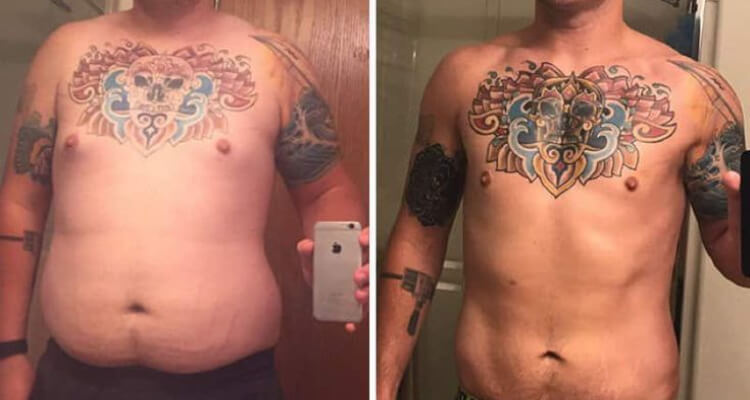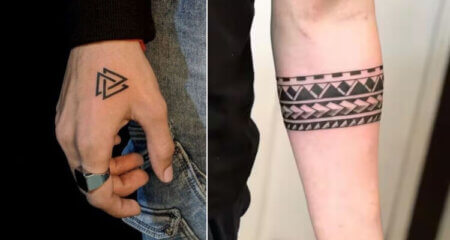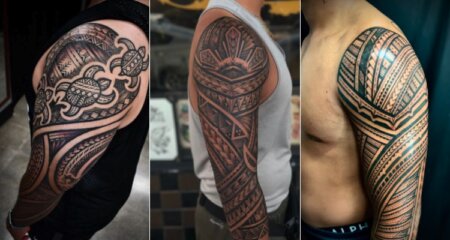
What Happens To Tattoos When You Lose and Gain Weight?
Posted on
When you get a tattoo, the ink gets into the deeper layers of your skin. The quality and look of the tattoo will be determined by the state of the skin at the moment of application. Tattoo distortion can be caused by a variety of circumstances, including abrupt weight shifts.
After a significant weight loss or gain, the appearance of tattoos may change, becoming sagging or off-kilter, or stretched and faded. Keep in mind that your skin is the greatest organ in your body. It may stretch and contract to fit your needs, but a tattoo is not as adaptable.
It’s possible that lines will no longer align as they once did. The tattoo may move somewhat in place depending on the area. The tattoo’s location has a big impact on how much it will be altered.
How Weight Loss Affects Tattoos:
When it comes to weight loss, the size and location of your tattoo will be the most noticeable alterations in its makeup. For example, if you have a tattoo on the side of your thigh and subsequently lose a significant amount of weight, the placement of the tattoo may change.
It may migrate to the front or rear of your thigh instead of staying put on the side of your thigh. Additionally, when your thigh shrinks in size, a tattoo that formerly covered a tiny section of your leg may appear to cover a larger area. It’s also worth noting that smaller tattoos may lose detail as the skin changes after being pushed taut.
Tattoos with complicated patterns or symmetrical designs, which must be very exact, can easily show the consequences of weight increase. Sleeve tattoos, which span the entire upper arm, shoulder, and sometimes the lower arm, are extremely popular. If you opt to add some muscle to the area, you may notice some changes.
How Weight Gain Affects Tattoos:
Weight increase, like weight loss, can have an impact on the placement and size of a tattoo design. Due to the rate at which the skin expands during pregnancy, tattoos right on the body’s belly are sensitive to change.
While stretch marks can alter an existing tattoo design, the effects of the marks are dependent on the design and placement of each individual’s tattoo. If you desire to touch up the region later, look for a tattoo artist that specializes in this type of skin because it can be difficult to deal with.
Working out and developing your muscles shouldn’t have any effect on your tattoo, but if you’re into heavy weightlifting, major muscle gain could change the form. The better the tattoo’s placement in relation to the muscle, the less likely it is to change.
Stretch marks are another common side effect of rapid weight gain. Stretch marks are the body’s way of informing us when our skin has reached its maximum capacity. Permanent stretch marks form in the skin when elastic fibers rip because they have reached their limitations.
They’re usually white or red in color, and they might run horizontally or vertically. It’s possible that stretch marks on the skin around your tattoo will detract from the design. Stretch marks are usually red when they initially appear and then turn white as they age.
Stretch marks may cause the ink particles to break up, causing you to lose parts of your tattoo. It can be repaired by tattooing over the stretch marks, but keep in mind that injured skin is more sensitive, thus the procedure may be more painful. The pigment does not pick up as well on this injured skin with broken elastic fibers as it does on healthy skin. Another good reason to stay away from the ice cream.
Affect on the Tattoo also depends upon these factors:
1. Location
Your tattoo’s placement will have a big impact on how much it changes as your body evolves. Weight loss will have a little impact on tattoos on the hands, wrists, feet, ankles, and back of the neck.
2. Time Frame
Slow weight loss will lessen the effects of your tattoo alteration. Rapid weight loss or increase is more likely to distort your tattoo design than gradual weight gain or reduction, and it may also produce stretch marks or drooping skin. Instead of harsh fad diets or weight-loss surgery, choose a healthy and slow weight loss to protect your tattoo while dieting.
3. Size
Larger tattoos may exhibit less distortion over time and as a result of bodily changes than smaller tattoos. A huge tattoo on your arm, leg, or chest, such as a sleeve, may change less visibly.
4. Types
Tattoo designs that are very symmetrical, such as tribal or Celtic patterns, are more likely to reflect the effects of weight reduction than designs that are less symmetrical.
Solutions:
1. Removal
While this is not a decision to be taken lightly, some people conclude that the change in their tattoo caused by weight reduction justifies its removal. This is a long and hard process.
2. Add to the tattoo
You may also decide that you want to do more than just color the tattoo. You could wish to add anything to the tattoo to make it seem better in its new condition or to hide some of the alterations.
3. Touch-ups
Rapid weight loss might cause tattoos to fade. With a few touch-ups, this can be remedied. You can have your tattoo artist add more color and clarity to the tattoo to make it look more vivid once more.

![30 Best Cobra Tattoo Ideas, Designs And Meaning [2025] 30 Best Cobra Tattoo Ideas, Designs And Meaning [2025]](https://www.trendingtattoo.com/wp-content/uploads/2025/01/Cover-2-450x240.jpg)


![Trending Tattoo Designs for Girls [2024] Trending Tattoo Designs for Girls [2024]](https://www.trendingtattoo.com/wp-content/uploads/2024/09/Trending-Tattoo-Designs-for-Girls_1-450x240.jpg)


